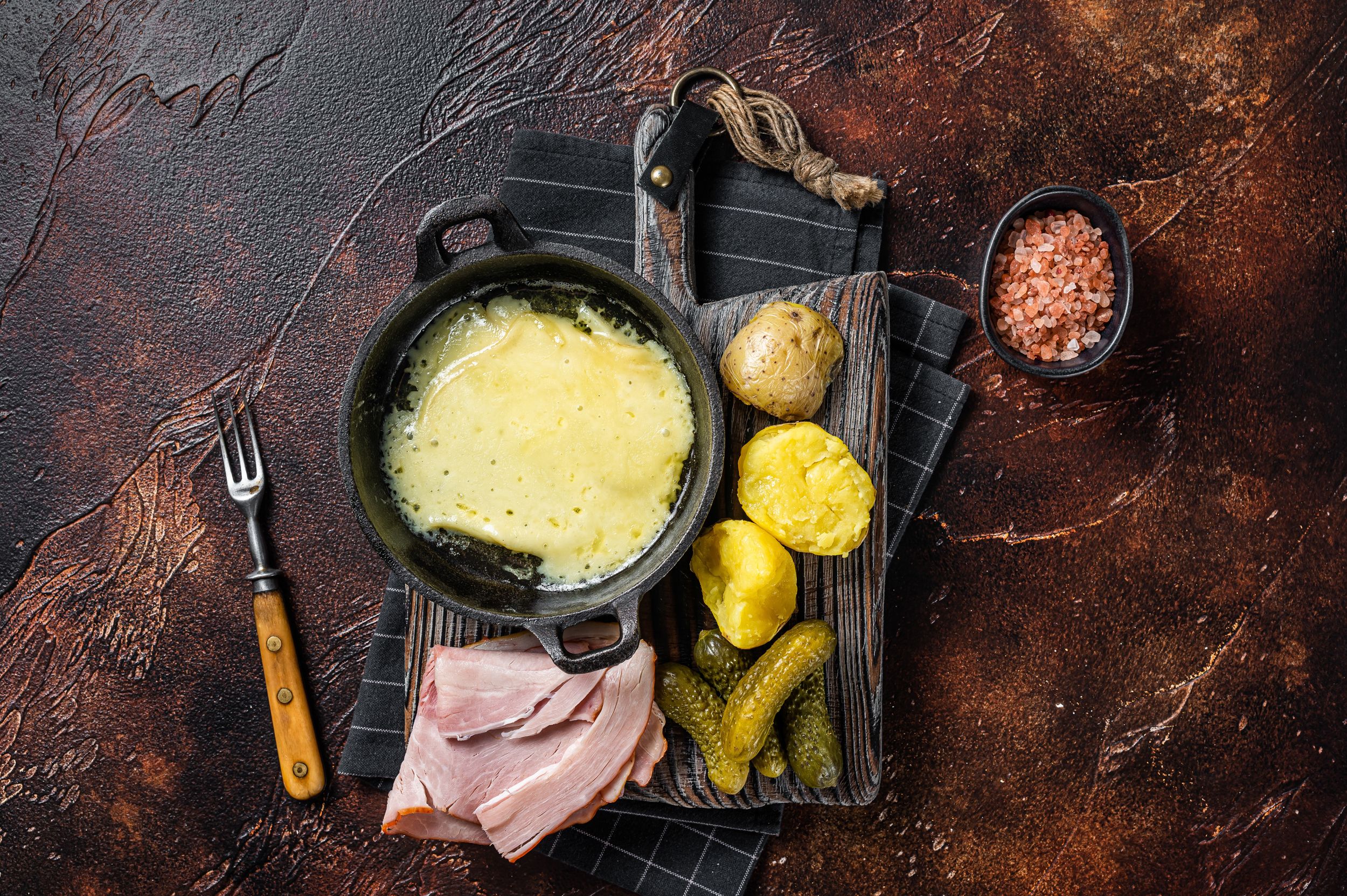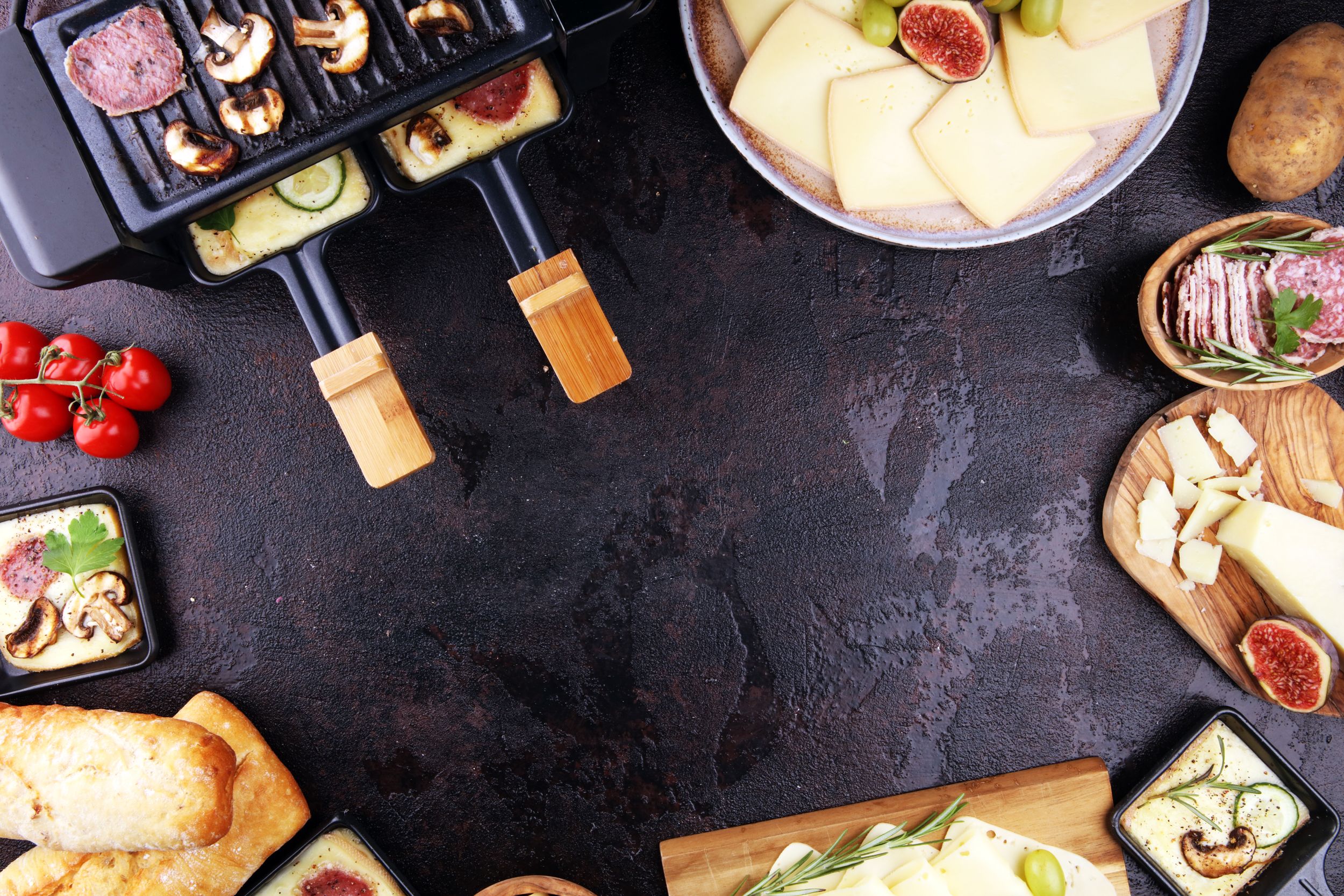A Swiss Tradition for the Soul
The warm spring sunshine filters through the blossoming trees, leaving a mosaic of light and shadow across the afternoon meal table. I sit back, one hand on my full stomach, and survey the smiling faces of relatives surrounding me against the backdrop of the Swiss Alps, where fields of cows with their gently musical cowbells are the soundtrack to the outdoor gathering. We’ve been gathered here all afternoon, slowly filling our bellies with the traditional Swiss meal of raclette while conversations in melodic Swiss German swirl around the hearty meal of melted cheese and potatoes.
It's been a few years now since I visited my Swiss family and enjoyed a celebratory raclette dinner with them, but I’ve also enjoyed the meal here in Canada. Raclette is a feast that inspires guests to slow down and enjoy a long, lingering culinary experience while you relish the company of those you’re dining with as you slowly melt the raclette cheese that will grace your potatoes.
Raclette’s history goes back hundreds of years, attributed to Swiss shepherds who worked in the French-speaking Wallis (or Valais) region. They needed food that would be cheap and filling, and not spoil easily in the summer sunshine—and the answer was cheese and potatoes. While the potatoes baked on the fire, the cheese was set aside it to warm until it began to melt, when it would be scraped onto the potatoes. This is where the term “raclette” comes from—it evolved from the French word “racler,” which means “to scrape.”
Most semi-hard melting cheeses can be used, like the Swiss or French cheeses Gruyere, Appenzeller or Emmentaler. The most authentic experience is to use raclette cheese, which is produced in many places around the world. If you’re a purist, seek out Walliser Raclette. This cheese is considered a “protected designation of origin” product under EU law (like champagne). It is aged a minimum of three months and exclusively made with cow’s milk from the Kanton Wallis with a regulated fat content.
You don’t need to buy a whole wheel of it, either. Since about the 1950s, electric table-top raclette makers (raclonettes) have become popular, allowing everyone to melt their own portions of cheese. On top, there’s a grill that allows for a slow cook of veggies and meats to accompany the traditional cheese and potatoes. It’s best to use small, firm potatoes and have them already boiled when you sit down at the table to begin melting your cheese and cooking your vegetables and meat.
While the meal itself is delicious and hearty, settling in to a meal of raclette becomes less about the food and more about the gathering of those enjoying it. Many European meals are situated this way culturally—as a tool to bring people together, to slow them down and allow space for true companionship. Raclette is a prime example of this; the meal often takes many hours as the cheese slowly melts and allows you to eat small portions at a time. It’s less about filling your stomach (though, trust me, it will be filled to overflowing!) and more about filling your soul with the conversations around you and valuable time spent with loved ones. And that’s something we could all use a little more of.





